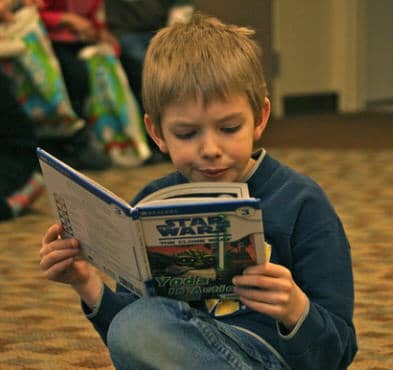As parents it’s hard to keep up with our kids’ learning schedules. When are they supposed to know their math facts? By what age should they be able to read simple chapter books? Are they on track with their grade-level learning or do we need to help them catch up?
These are all questions we cover in our series on what kids learn in each grade. Today, we continue with grade 1.

Some Background
Grade 1 is when your child enters into the big school. They’ll join the bigger kids in the playground at recess, they’ll eat in the cafeteria for the first time and they’ll learn to put their social skills to the test. This is also an “aha” year for learning. Their reading skills will take off, deciphering words and sentences to make sense of stories, math becomes more complex as they develop the ability to understand what numbers really mean, and their science and social studies classes will have them explore beyond their own world.
Socially, this is the year that kids are expected to be more responsible. They will be expected to follow rules, understand and follow the school routines (such as finding their classroom and going to the bathroom by themselves) and there will be an expectation of being able to work independently on certain tasks during class.
Reading
This is the year your child learns to read. Some kids will be fluent readers by the end of the grade, others will have taken solid steps towards reading on their own. Teachers expose their students to lots of different kinds of writing – stories, rhymes, news, fact books, etc. First graders start to learn that knowledge comes from reading.
In grade 1, your child will be able to recognize core words, write, know the sound correspondence of most letters in the alphabet. They’ll be building on the phonemic awareness with more complicated sounds like blends and digraphs, and they’ll be learning strategies for decoding/sound out words they don’t know.
In writing, kids are exploring expressing themselves on paper, often inventing spelling as they start to understand written language. Teachers will ask your kids to keep a journal, write stories and work on simple fact projects – all to have them practice their writing skills.
Math
As kids move into first grade, they find themselves moving onto problem solving, operations and number sense. Having learned the basic numbers, they now learn about numbers greater than those they can count, they do simple addition and subtraction problems – often working with physical objects – and they learn to count by 2s, 5s and 10s.
They will also start learning about time and money, as well as basic geometric shapes in 2D and 3D.
Science
Like math, science takes the first grader to the next level, asking them to focus on finding patters in the natural world. They’ll study many topics, such as magnets, animals and plants. They’ll follow the life cycle of an insect, often a butterfly. They’ll also complete projects on weather patterns, how they contribute to the water cycle and how the water cycle sustains life. They may also start to explore some basic physics: experimenting with motion and how pulling and pushing affects objects.
Social Studies
In grade 1, students move beyond their focus on “me” and “how I relate” to my environment, to a more concrete understanding of their family, school and community, how neighborhoods make up cities, cities make up states and states make up nations. A popular field trip for grade 1 is a visit to the library to learn how this public institution works and to learn to borrow a book on their own.

